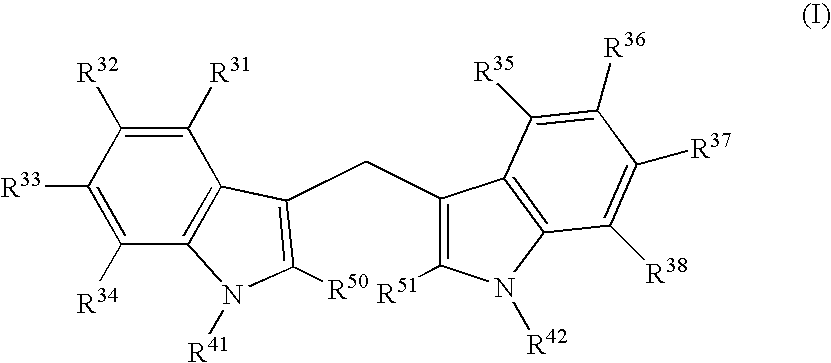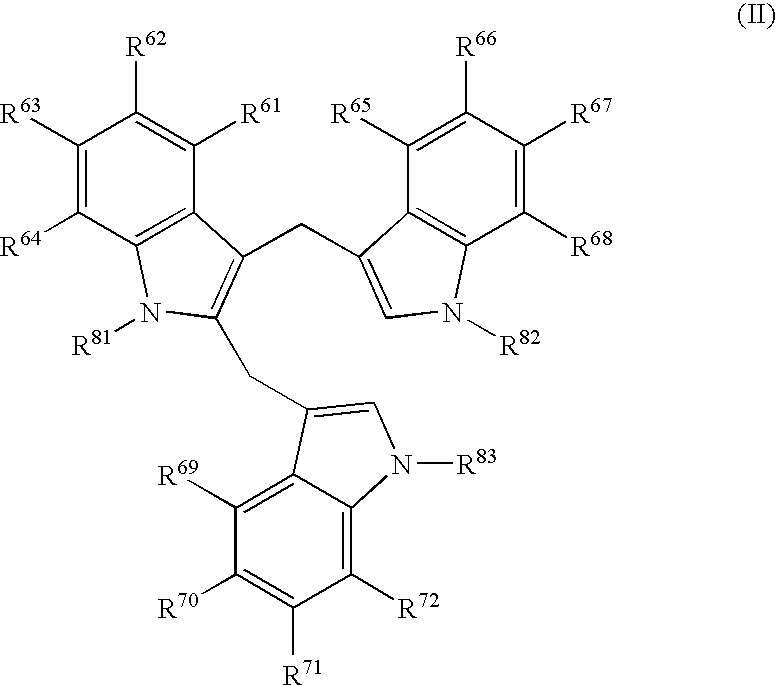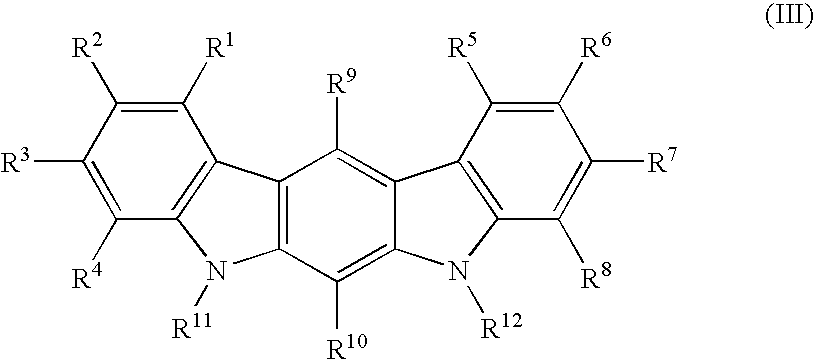Diindolylmethane-based compositions and methods of use thereof for promoting oral mucosal and bone health
- Summary
- Abstract
- Description
- Claims
- Application Information
AI Technical Summary
Benefits of technology
Problems solved by technology
Method used
Image
Examples
example 1
5.1 Example 1
Manufacture of Processed DIM for Enhanced Oral Bioavailability
[0215] Preparation of processed Diindolylmethane is accomplished according to the steps outlined in U.S. Pat. No. 6,086,915, herein incorporated by reference in its entirety. Briefly, this included mixture of about 10-40% by final weight of Diindolylmethane with about 10-40% by final weight of vitamin E polyethylene glycol 1000 succinate (Vitamin-E-TPGS, Eastman Chemical), 2-20% by final weight phosphatidyl choline (Phospholipon 50G, Rhone Poulenc) and 15-30% by final weight hexanol. This mixture is made homogeneous by mixing. The homogeneous mixture of indoles and other oil soluble substituents listed above is added to a solution of modified starch in water (Capsul Starch from National Starch, Inc.). The starch component forms from 30-70% of the final dry weight of the product. The well dispersed final combined mixture is then subjected to spray drying. The resultant product is a fine powder containing Diin...
example 2
5.2 Example 2
Manufacture of Capsules Containing Diindolylmethane
[0216] Capsules containing 150-300 mg of processed Diindolylmethane, as produced according to the steps described in Example 1, are made by mixing the processed Diindolylmethane with microcrystaline cellulose and placing the mixed powder into opaque gelatin capsules.
[0217] Capsules containing the combination of 150 mg of processed Diindolylmethane and 30 mg of Resveratrol (from 300 mg of Regrape X) (Interpharma Praha, Czech Republic), are made by mixing the processed Diindolylmethane, Regrape X, with microcrystaline cellulose or rice flour excipient and placing the mixed powder into opaque gelatin capsules.
[0218] Capsules containing the combination of 150 mg of processed Diindolylmethane and Silibinin, are made by mixing the processed Diindolylmethane with 200 mg of SiliPhos (Idena, Inc.), adding microcrystaline cellulose or rice flour excipient and placing the mixed powder into opaque gelatin capsules.
[0219] Capsul...
example 3
5.3 Example 3
Manufacture of Complex Particle Formulations with DIM-Related Indoles for Improved Bio-Delivery to Oral Mucosa
[0222] Introduction: Topical treatments of oral mucosal disorders according to the present invention are benefited by exposing inflamed oral mucosa to higher concentrations of DIM-related indoles for more prolonged periods of time. Therefore, formulation of DIM, with or without additional anti-inflammatory agents and / or antibacterial agents, in slowly dissolving particles improves the treatment effect. Additional, desirable characteristics for sustained release particles of active agents include bioadhesive and penetration enhancing activity that prolongs contact of the particle with the oral mucosa and improves penetration of active agents into the mucosa. Manufacturing of DIM-containing particles was accomplished according to the following formulation methods to achieve these objectives. This processing includes the use of complex particle formation using met...
PUM
| Property | Measurement | Unit |
|---|---|---|
| Mass flow rate | aaaaa | aaaaa |
| Mass flow rate | aaaaa | aaaaa |
| Mass flow rate | aaaaa | aaaaa |
Abstract
Description
Claims
Application Information
 Login to View More
Login to View More - R&D
- Intellectual Property
- Life Sciences
- Materials
- Tech Scout
- Unparalleled Data Quality
- Higher Quality Content
- 60% Fewer Hallucinations
Browse by: Latest US Patents, China's latest patents, Technical Efficacy Thesaurus, Application Domain, Technology Topic, Popular Technical Reports.
© 2025 PatSnap. All rights reserved.Legal|Privacy policy|Modern Slavery Act Transparency Statement|Sitemap|About US| Contact US: help@patsnap.com



